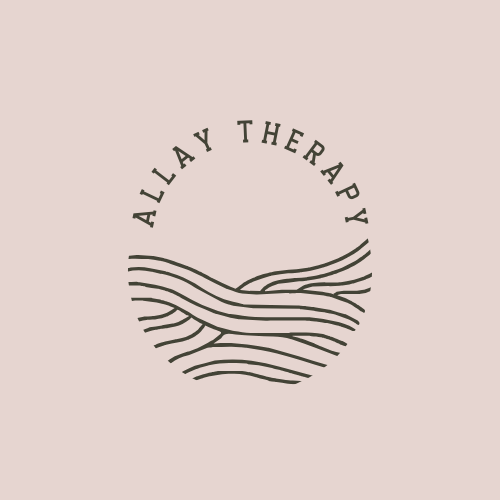Do you ever feel a slight pain in leg and find yourself furiously googling the potential worst case causes? After hours on webMD, you have come to the conclusion that you are suffering from a rare, unheard of medical aliment with no cure? Anxiety specifically focused on our health can be so consuming and paralyzing. We can find ourselves spending hours checking our symptoms online and asking our loved ones to reassure us that we are indeed okay. We might even end up at the doctor's office or ER even after being repeatedly told we are physically fine by health professionals. According to Harvard, health anxiety is actually quite common affecting 4-5% of the population with estimations that 12% is a more accurate number. When we have health anxiety, it is extremely difficult to separate ourselves out from the probable and possible categories of what could be causing our pain, discomfort or sensation. Although, I find it helpful to create some space to fully delve into the meaning behind the health anxiety and where it might have originated from, it is also important to have some coping skills to address anxiety while you are beginning to embark on this work.
It is important to state should you have concerns about your health, it does not hurt and is actually recommended to seek out a medical evaluation. Health anxiety is typically classified as excessive or disproportionate worry about your health, sometimes with minor symptoms or no symptoms at all. If you find yourself constantly on edge, hypervigilant and excessively worried about your health, below are some coping skills to help you in the moment.
First, if you are prone to health anxiety, I strongly encourage you to exit out of WebMD and any aimless searching online. What is often posted are the most scary, catastrophic possibilities. You will typically not find the stories about the more mundane experiences of having minor symptoms that turn out to be nothing. Next, if you find yourself beginning to panic, work your way through the below tools. Ideally, you should practice the tools that resonate the most with you when you are not in a panicked place as it will be much easier to utilize them when you are.
TIP Skills which stands for Temperature, Intense Exercise, Paced Breathing and Paired Muscle Relaxation. These are actually coping skills often utilized in DBT therapy.
a. Temperate: Run cold water over your face, wrists or submerge your head in a sink full of cold water. This last one sounds a little wild but there's actually science around it. When you submerge your head in cold water while holding your breathe momentarily, you activate the "dive response" which redirects your energy at the tasks at hand, pulling you out of the panic state you had been experiencing
b. Intense Exercise: Similar to the dive response, engaging in intense exercise begins to redirect your energy and focus away from panic. You don't have to go out and run a marathon, you can simply begin to do several sets of jumping jacks, push ups or some short sprints.
c. Paced Breathing: One of the quickest ways to calm our nervous system is to breathe and not just breathe but breathe strategically. This could look like focusing on inhaling and exhaling from your belly, placing your hand on your stomach and making sure to watch your stomach rise and fall. It could be breathing out longer than we breathe in, like with a count of 7 breathes in and 11 breathes out. When we are in panic, our breathing often becomes shallow and short. If we can begin to slow down our breathe and breathe deeper, this will help to calm our body down. When we calm our body down, it is way easier to then try to calm our minds.
d. Paired Muscle Relaxation: As we begin to focus on our breathe we can also breathe into the parts of our body where we feel tension, tightness, pain or discomfort. Additionally, we can slowly tighten parts of our bodies and then relax them for a similar affect.
Grounding Strategies are anything that helps to bring your focus away from the panic and toward yourself. There are typically three types of grounding: physical, mental and soothing.
a. Physical: In this strategy the goal is to involve your senses. You can involve isolated senses like taste by eating something sweet or sour and describing it. You could involve your sense of touch by wrapping yourself in a weighted blanket (which can have the same neurochemical response as receiving a hug).
b. Mental: It can be helpful to redirect your attention to a task at hand, such as naming all animals with the letter A or naming all the kinds of cars you see you on the street. It can be continuing to name every 3rd letter in the alphabet. There are various ways you can employ this strategy, the important part is finding something stimulating enough that you need all your mental reserves to think through.
c. Soothing: This can look different for everyone and can be a strategy that evolves over time. You can literally reach for what you find soothing, a refreshing beverage or blanket or you can allow yourself to picture someone or something that feels soothing to you. This might be an image of you in your calm place or with someone who is very comforting to you.
Although these Calming tools can be helpful in a pinch, they are only bandaids. They can help you feel less panicked in the moment and allow you to begin to think more clearly, which is helpful if you are needing to assess if what you are feeling physically actually warrants a medical visit or not. I find that when these calming strategies are coupled with more exploratory, in depth psychotherapy, it is possible to decrease your health anxiety over time.
